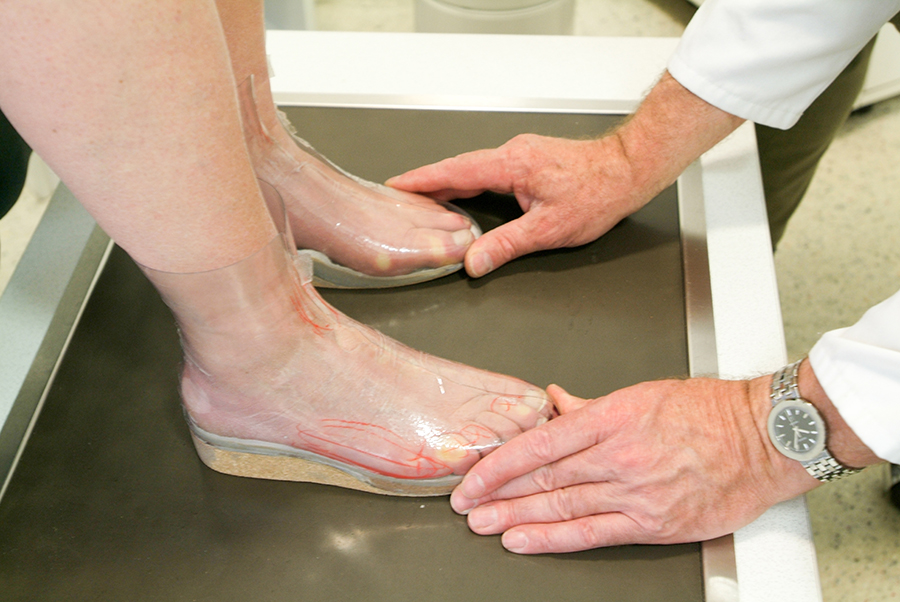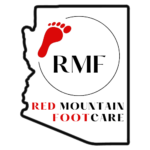What are Orthotics?

Also known as orthoses, orthotics refers most often to inserts or devices, which are custom-made to fit within a person’s shoe. These devices are designed to correct specific issues. The premise behind their purpose is to help people run, walk and even stand more comfortably and efficiently. Read on to learn more about orthotics and how they can help you realize a better quality of life:
Types of Orthotic Devices
There are three main categories of orthotic devices that encompass a wide range of materials, sizes, and shapes. These include those that work to combine protection and functional control, those that serve a protective purpose and those that are created to alter the foot function. These are referred to as rigid, soft and semi-rigid orthotics respectively.
- Rigid Orthotics: These devices are used primarily within dress or walking shoes. They are created to control function. They are usually comprised of either carbon fiber, plastic or other firm material. To fit your rigid orthotics properly, your podiatrist, like the professionals at Red Mountain Footcare, will take an image of your foot sometimes using a plaster cast or other technology. Your rigid orthotics will effectively control or alter the motion within your two major foot joints, which are situated below the ankle joint. This, in turn, will improve, or eliminate altogether, pains within the lower back, thighs, legs as well as aches and strains.
- Soft Orthotics: This type of device is designed to take the pressure off sore or uncomfortable spots, increase balance and absorb shock. They are most effective when treating deformed, arthritic or diabetic feet. Soft orthotics, not surprisingly, are designed using cushioned, soft materials, which are created to be worn directly against the sole of your foot. They are usually fitted to span from the heel all the way to the ball of the foot, extending to the toes. You can also get a soft orthotic insert custom created by your podiatrist via a plaster cast or additional foot image.
- Semi-Rigid Orthotics: You can best use semi-rigid orthotics to provide foot balance when either participating in sports or simply walking. They are called semi-rigid because they combine rigid materials with layers of soft material. They are most often used for children who are suffering from either out-toeing or in-toeing disorders or are flatfooted. However, they are also used by athletes to prevent pain as they compete and train.
There is one more category of orthotic devices that includes not only the insert that goes into the shoe but also utilizes a brace that extends upright, beginning at the heel and extending up to the calf. These are referred to as ankle-foot orthotics.
What is The Difference Between Inserts and Orthotics?
You can get a shoe insert from virtually any variety store. Unfortunately, they are not custom created for you and are instead designed to simply make your shoes more comfortable and provide extra cushioning around your toes, on your heels and even give you extra arch support. Conversely, orthotics are custom created prescription medical devices. They are most specifically designed to help correct various biomechanical foot issues, altering the way you run, stand or walk. Of course, as outlined above, orthotics are created to help the issues related to medical conditions like arthritis, bursitis, plantar fasciitis, and diabetes. In some cases, orthotics can even be a way to remedy flat feet, avoiding more severe measures like surgery.
How Your Podiatrist Will Evaluate Your Need For Orthotics
When visiting a podiatrist, you will likely be asked to walk or perform specific activities. During this time, your podiatrist is carefully analyzing how your hips, legs, ankles, and feet move. Then, your podiatrist will thoroughly examine each foot and perhaps even take an image of your foot. The podiatrist will be looking at your feet for signs of injury, damage or arthritis.
Common Conditions That Are Improved With Orthotics
There are many conditions that are improved or corrected by orthotics, some of which have been briefly mentioned above. Read on to learn more specifics on how orthotics can help improve several common foot conditions:
- Arthritis: As mentioned above, arthritis can be improved by orthotics. Arthritic problems can cause discomfort in the feet and lead to poor positioning. These problems are positively altered by orthotics.
- Back Pain: Specific issues that cause back pain, such as a lack of cushioning or arches that roll inward or even poor positioning. Orthotics can help correct these problems.
- Bunions: This condition is a common yet painful problem that includes the growth of painful bumps on the big toe, leading to foot deformities. Wide box orthotics can help correct this problem by reducing the pressure on the big toe.
- Bursitis: This uncomfortable condition is caused by the inflammation of fluid-filled sacs in the toe or heel region. Orthotics that provide arch or heel support can take the pressure of these areas, thus reducing the discomfort associated with bursitis.
- Diabetes: Many times, individuals suffering from diabetes will lose the feeling or sensation in their feet. This condition is officially known as diabetic neuropathy. Orthotics can help reduce excessive foot pressure and stress caused by diabetes and prevent subsequent foot ulcers from developing.
- Flat Feet: Back, ankle and foot pain can be a result of flat feet. Orthotics can promote correct foot positioning by supporting the feet.
- Hammer Toes: This condition is often a by-product of bunions. Hammer toes include deformities on the ball of the foot and secondary toe pain. Orthotics support the feet, reducing the severity of hammer toes and preventing them from getting worse.
- Heel Spurs: This medical condition is the result of excess bone growth on either the bottom or back of the heel. Orthotics effectively reduce inflammation and provide support to counteract this painful condition.
- High Arches: High arches can cause plantar fasciitis, knee pain, shin splints and stress various muscles in the feet. Orthotics correct this problem by preventing the feet from rolling too far either outward or inward.
- Injuries: Orthotics help those who have experienced various traumatic issues involving the feet. They are most often utilized during the healing process.
- Plantar Fasciitis: This common medical condition often results in heel pain. Orthotics can support the feet and heels to treat this condition.
- Underdeveloped Muscles: Sometimes, underdeveloped foot or leg muscles can result in positional concerns. This condition can be utilized to treat this condition.
Will Orthotics Alone Heal Your Foot Problems?
Although orthotics are designed to help various medical conditions involving the feet or ankles, it is only one element of a treatment regimen. Orthotics are often recommended along with other treatment measures such as anti-inflammatory drugs to treat various painful foot conditions. A podiatrist will often recommend or prescribe a custom orthotic along with other treatment methods, such as kinesiology taping, braces, etc. The main goal is to prevent more extensive measures, such as surgery.
Will Orthotics be a Guaranteed Success?
Unfortunately, no, there are some people who will not correct all conditions affecting the ankle and feet using orthotics. Your podiatrist will be able to properly evaluate the effectiveness of orthotics in your specific situation.
Your Next Step
Contact us at Red Mountain Footcare to learn more about how orthotics can positively impact various medical conditions affecting your feet and ankles.
